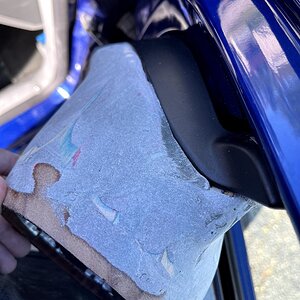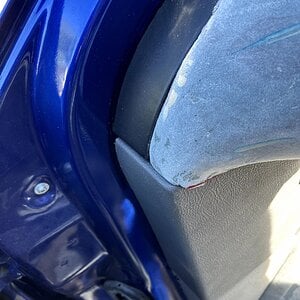http://www.epanorama.net/documents/audio/speaker_impedance.html
Impedance and effiency
Let's look at the following situation: Take an 8 ohm speaker and wind twice the length of wire onto the voice coil. The resistance woul go up, for sure, but because there is no more wire in thegap, the electromagnetic couping coefficient, the Bl product, would also go up. And you would have, as a result, a 16 ohm speaker with essentially the same efficiency as the 8 ohm speaker, all other things being equal.
Or you could design a speaker with both a higher impedance (longer wire in the voice coil) AND a larger magnet assembly with higher flux density in the gap and get a higher impedance driver with higher electro-acoustic efficiency.
Or you could design a higher impedance driver with a stronger magnet and a lighter cone and get even more efficiency.
The point is, the rated impedance IS NOT the same as the efficiency, nor is there any direct correlation between the two. Efficiency of a given direct readiator driver is determined by the folowing relationship: l
That's what I've been trying to tell you. But all other things equal, a 4 ohm driver still has to have a cone, suspension, magnet, etc. All other physical properties are still there. So, when increasing efficiency as detailed in your link, a byproduct of that is an increase in impedance. It is a byproduct.
You have a flux field in the center of your magnet. It's a fixed diameter, so you only have a fixed amount of room to work with. Take that magnet, and put a 4 ohm coil in there. Depending on the winding of the coil will dictate the inductance of the coil. The inductance will determine how it interacts with the flux field. The impedance is just a product.
I'll quote this next part.
If you take a given driver, and simply swap out voice coils, you end up with more efficiency as you increase the impedance. Take a voice coil, say 2" diameter, 1" winding length, 24AWG 4 layer, and swap it with a 2" diameter, 1" winding length, 27AWG 4 layer, and you double the impedance, but the efficiency also goes up - less mass and better packing density."
It's because the moving mass has dropped, and if desired - because of the thinner wire diameter which packs in tighter - you can put more layers in the voice coil and potentially raise the BL."
You didn't do anything to debunk anything I said, or Helotaxi said. You proved it. Now tell me, how do you increase the efficiency, or even keep it the same, of a speaker by lowering it's impedance, knowing that in order to do so, you have to unwind the coil?
What don't you get?
http://www.epanorama.net/documents/audio/speaker_impedance.html
Or you could design a higher impedance driver with a stronger magnet and a lighter cone and get even more efficiency.
Hmmmm, sounds like a 16 ohm pro-audio driver. Gee, I wonder why they would do that?


